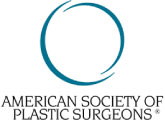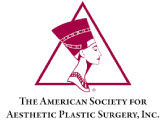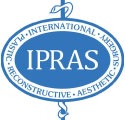Fat grafting is used to plump up facial and body features with your own fat. Liposuction is used to harvest fat from a part of the body where there is a surplus. It is then injected into an area where it can add volume, fill a dimple or correct a contour deformity.

How can it help?
Fat grafting is used to treat a wide range of problems, and is frequently used in combination with other procedures.
It is often used for reconstruction and rehabilitation. This could be anything from rehabilitating traumatic injuries to repairing facial scars from acne. It is increasingly used to treat problems resulting from medical treatments such as radiation, chemotherapy and steroid injections. It is frequently a part of breast reconstruction after cancer treatments.
The procedure is also commonly used for cosmetic purposes. It is useful to minimise wrinkles and plump up sunken cheeks that can result from aging. It is also used to fill in small, depressed areas or dimples around the breasts, buttocks or other parts of the body.
For the injected fat to “take” successfully, it needs adequate blood supply on both surfaces of the grafted fat. Hence fat grafting in some areas, such as the breast, is done in small volumes and repeated after 6 months, while in gluteal grafting a greater volume is possible with each treatment.
Because the procedure uses your own fat cells, there is no risk of your body rejecting the tissue.

Consultation
The first step when you are considering fat grafting is a consultation with Dr. Arianayagam.
He will ask you a variety of questions about your current health situation, medications, allergies and any past medical treatments, before carefully examining your body and skin. He will then discuss the options available and his recommendations. At the conclusion of this first consultation a blueprint will be developed, determining where the fat will be drawn from and where it will be reinjected.
Ideally, a second consultation is had a week or two later to give you the opportunity to come back with more questions and to confirm your decision.

Procedure
The procedure is usually conducted in a day surgery under general or regional anaesthesia.
Both donor and recipient areas will be marked based on the plans made at your consultation.
Depending on the amount required, fat may be removed using a small or large syringe. Generally fat is harvested from the abdomen or buttocks. It is then processed to remove excess fluids, before being injected at the recipient site.

Recovery
Once the local anaesthesia wears off you may have some pain, which should be manageable with pain medication. You will also have some swelling, bruising and redness in both the area where the fat was removed and where it was re-injected.
Patients can typically resume most activities after 3-4 weeks. A compression garment may be provided for the area where the fat was harvested to help with healing.
Frequently Asked Questions
Common side effects include bruising, swelling and possibly small scars in the area where the fat was harvested. The treated areas often experience numbness and itching.
Beyond these relatively minor side effects, there are also risks and complications specific to fat grafting.
Fat necrosis
If too much fat is injected, this can lead to hard lumps of dead tissue, known as fat necrosis. These lumps my break down or be reabsorbed by the body over time, or surgical removal may be required. Necrosis is more common when fat is injected into and area with poor blood flow, such as thin or radiated tissue or over an implant.
Tissue Loss
In rare cases, transferred fat may cause the skin over the treated area to be injured, resulting in loss of skin and surrounding tissue. Ultimately this may leave scars requiring corrective surgery.
Fat embolism
It is very rare, but it is possible for a piece of fat to find its way into the blood stream, resulting in a serious, life-threatening condition.






